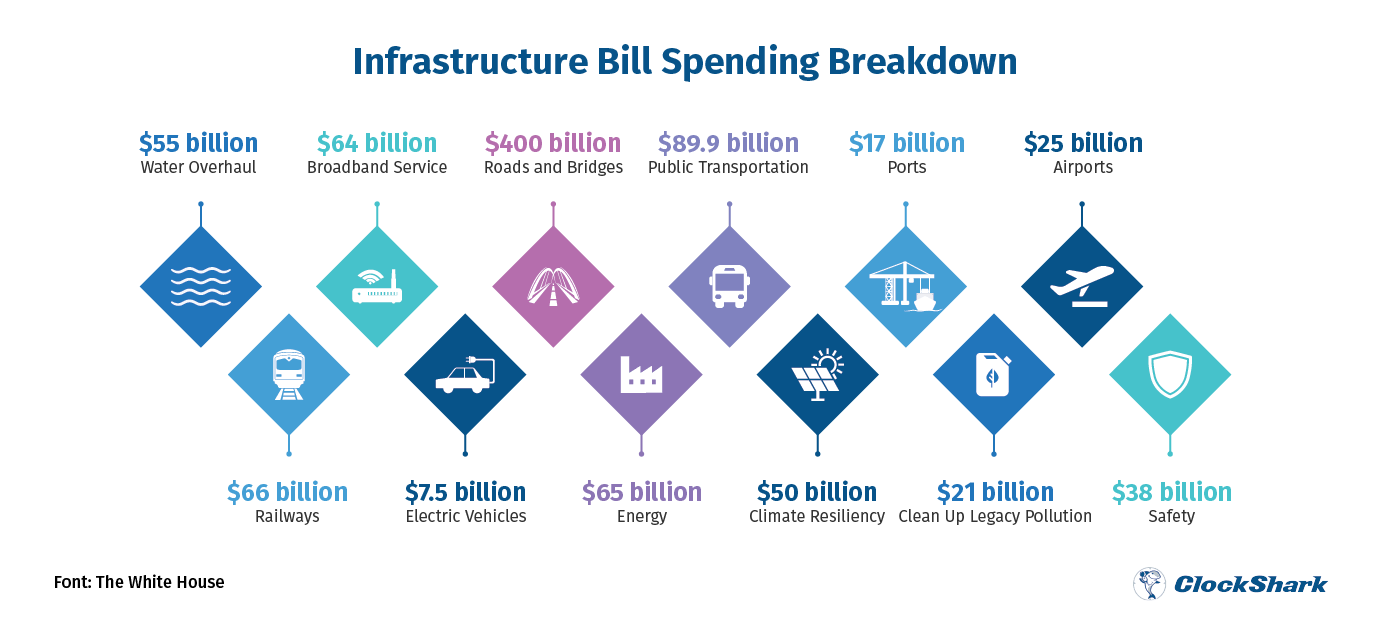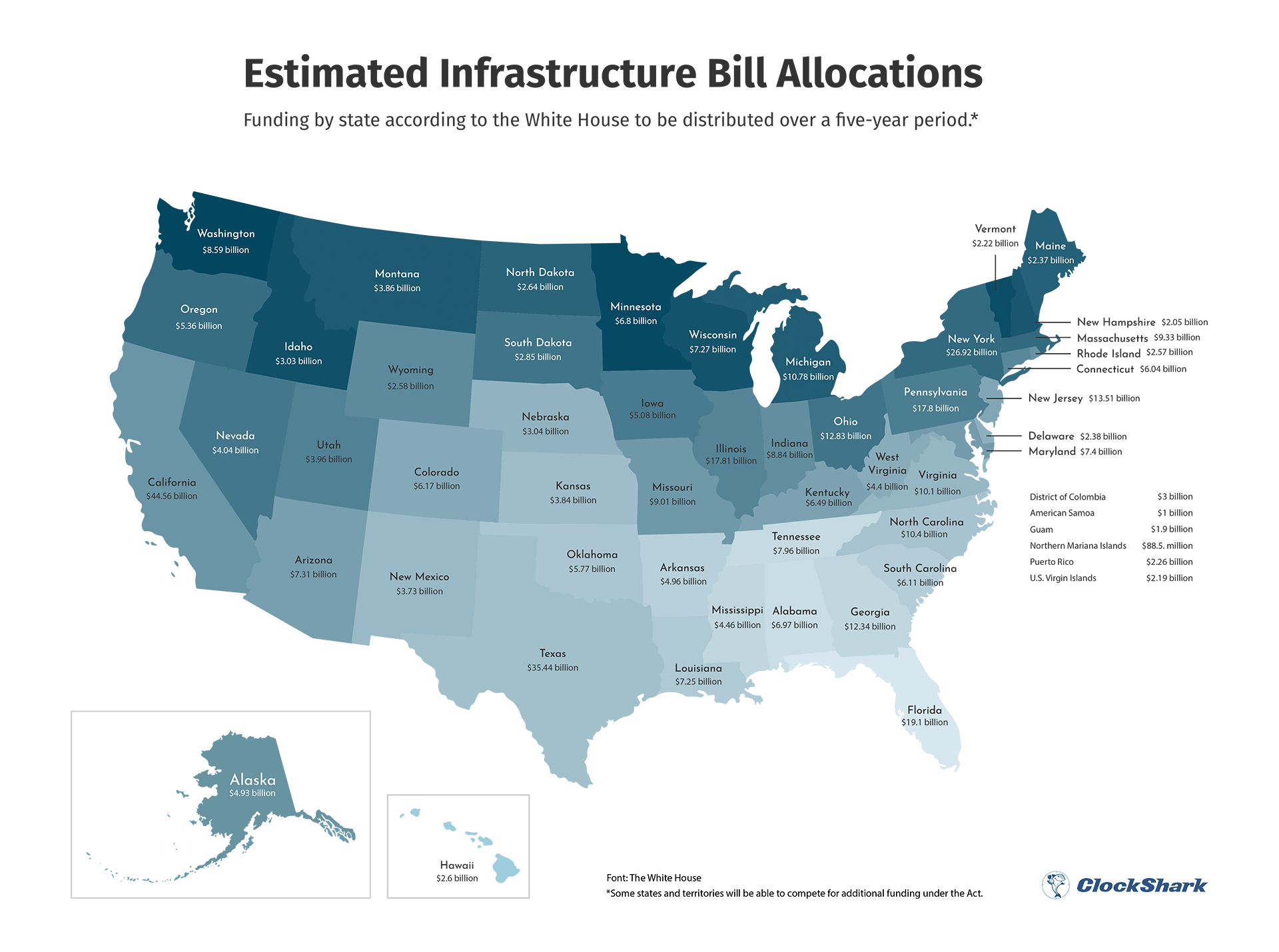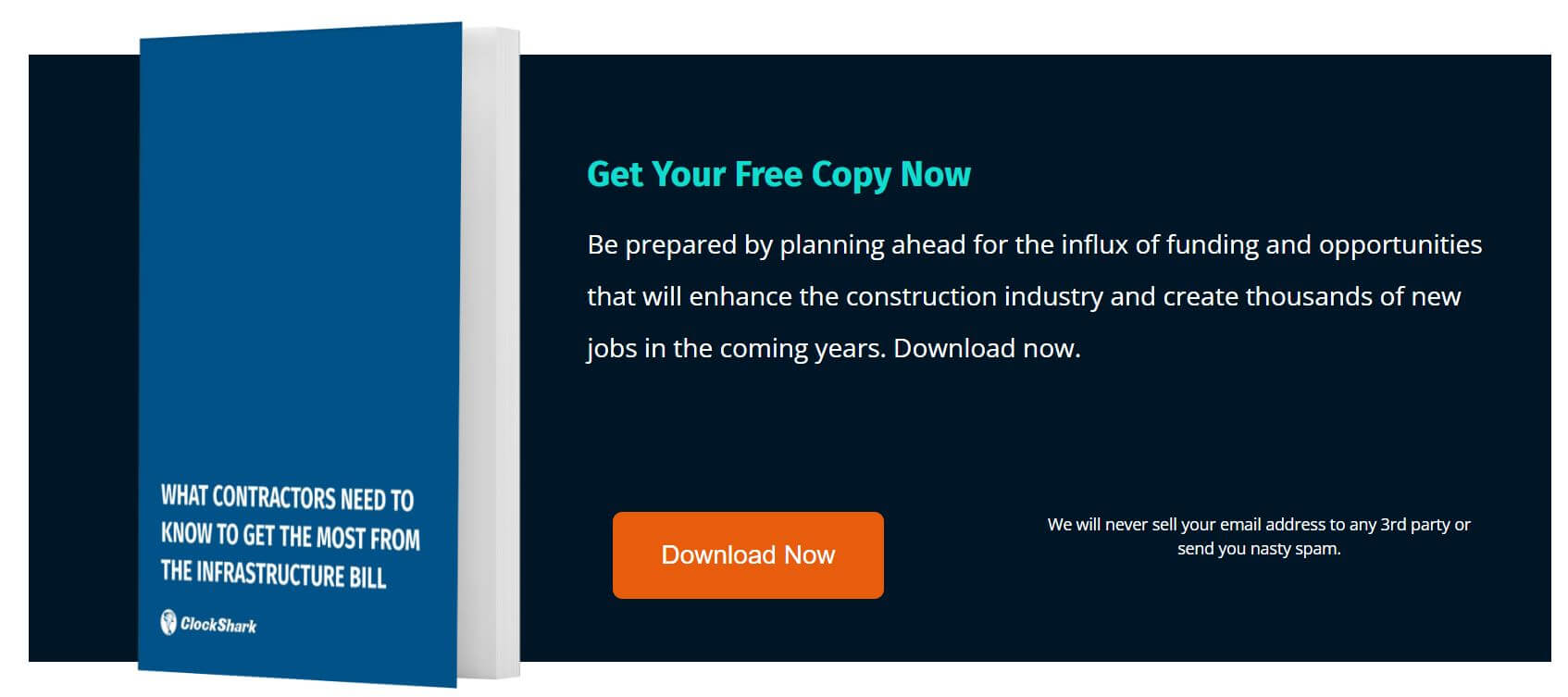Spending breakdown
The Federal Government will provide funding for these projects to states and localities, via grants/rebates, subsidies, direct loans, cooperative agreements, direct federal spending, incentives. This funding will be distributed by the Treasury Department and a significant amount through the Transportation Department.

Water Overhaul - $55 billion
To remove lead pipes and help provide clean drinking water for millions of households, schools, and child care centers.
Broadband service - $64 billion
To provide quality broadband services to underrepresented areas and provide lower prices for those who are less able to afford it.
Roads and bridges - approximately $400 billion
For five years to repair roads and bridges, and promote innovative projects to transform roads and bridges.
Public transportation - $89.9 billion
To address outdated transport systems across the country and begin the transition to zero-emission vehicles, to help combat climate change.
Ports and airports - $17 billion and $25 billion, respectively
To address future supply disruptions and repair airports and clean up airport maintenance backlogs.
Railways - $66 billion
To remove Amtrak’s maintenance backlog, update the Northeast Corridor, and expand on rail services to provide more access (with climate-friendly options).
Electric vehicles - $7.5 billion
To support the installation of EV chargers along highways to help with long-distance travel as well as chargers where people work, live, and shop.
Energy - $65 billion
To build thousands of new transmission lines to expand on renewable/clean energy, to support cutting-edge technologies to build a zero-emissions economy.
Climate resiliency - $50 billion
To protect against climate-related issues like drought, wildfires, floods, and heat problems, as well as cyber-attacks.
Clean up legacy pollution - $21 billion
To clean up Superfund and brownfield sites.
Safety - $38 billion
To address safety concerns regarding traffic fatalities, the infrastructure law allocates nearly $38 billion to improve transportation safety. It is broken down into multiple categories:
- $15.6 billion for Highway Safety Improvement Program
- $17.5 million for Safety-Related Activities
- $5 billion for Safe Streets and Roads for All
- $11.8 billion for Federal Carrier Safety Administration and National Highway Traffic Safety Administration
- $1.2 billion for Pipeline and Hazardous Materials Safety Administration
- $4.2 billion for Rail Crossing Safety




